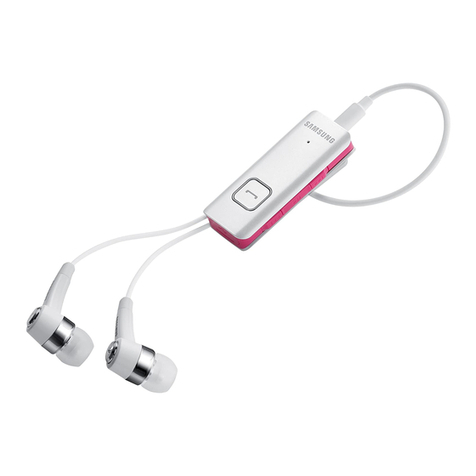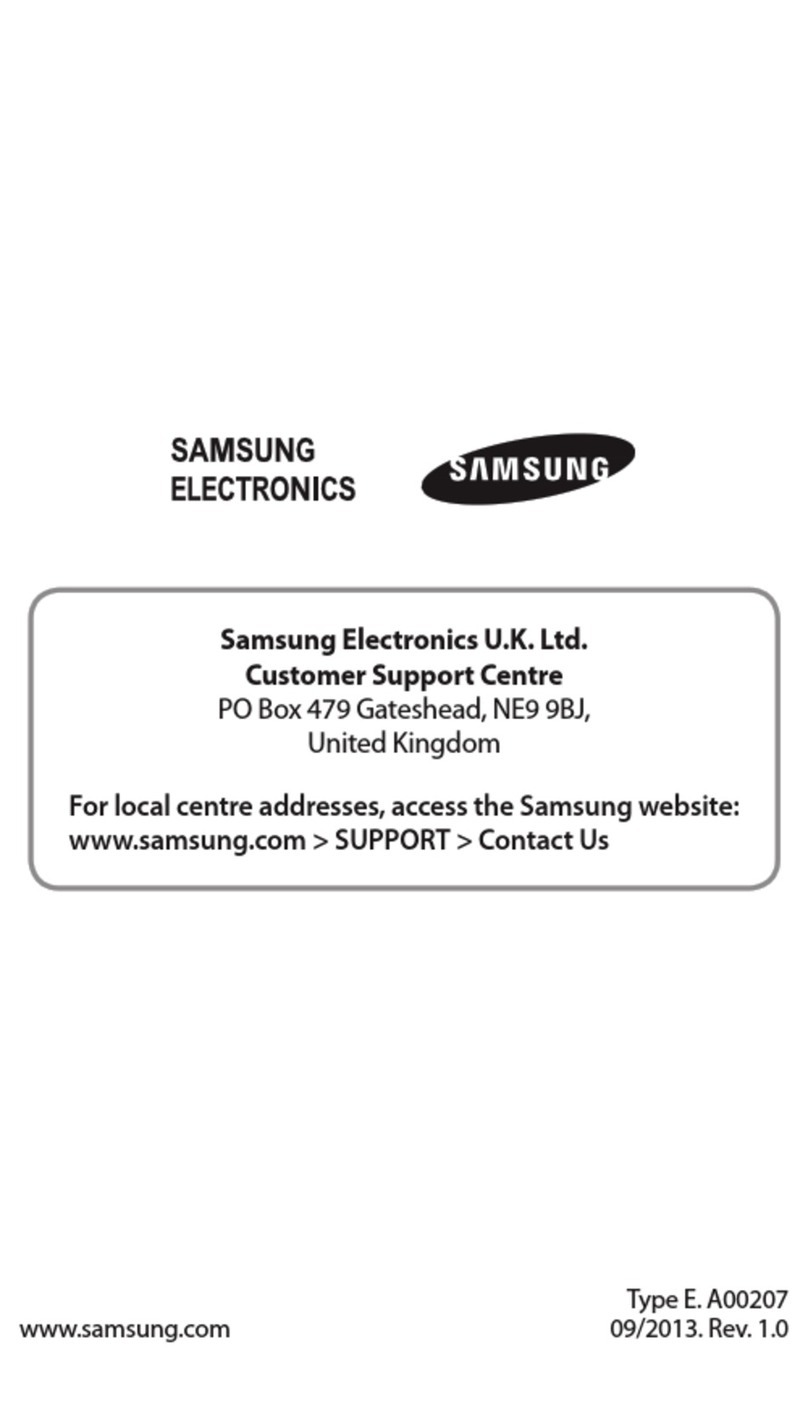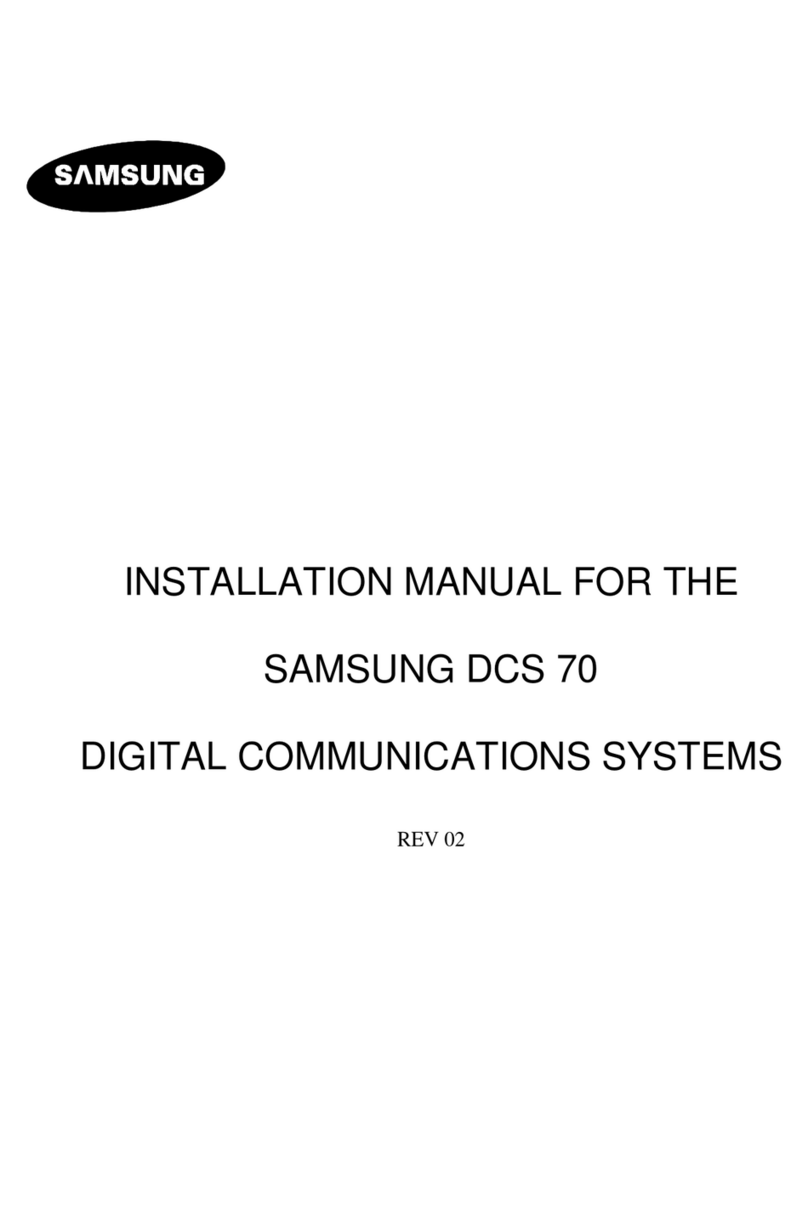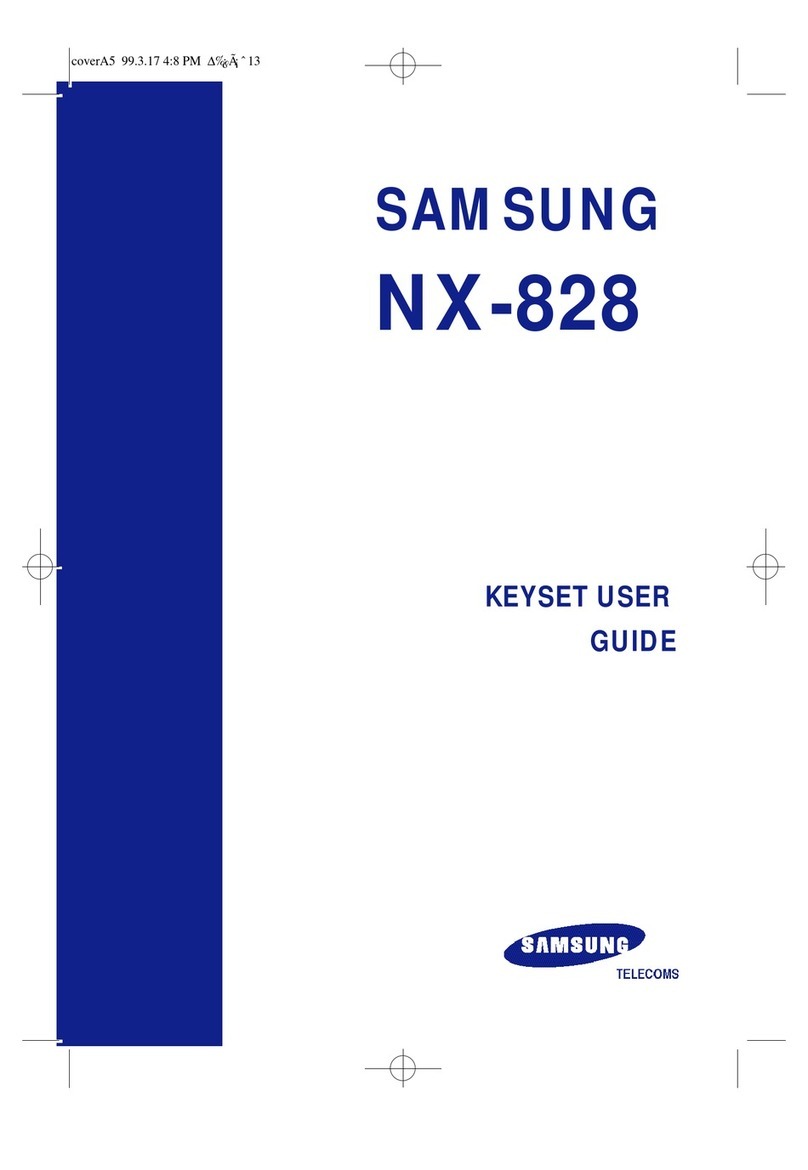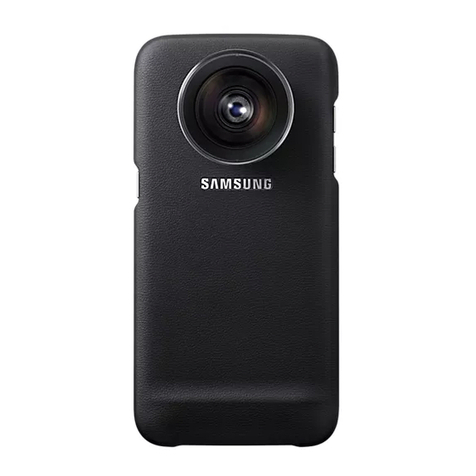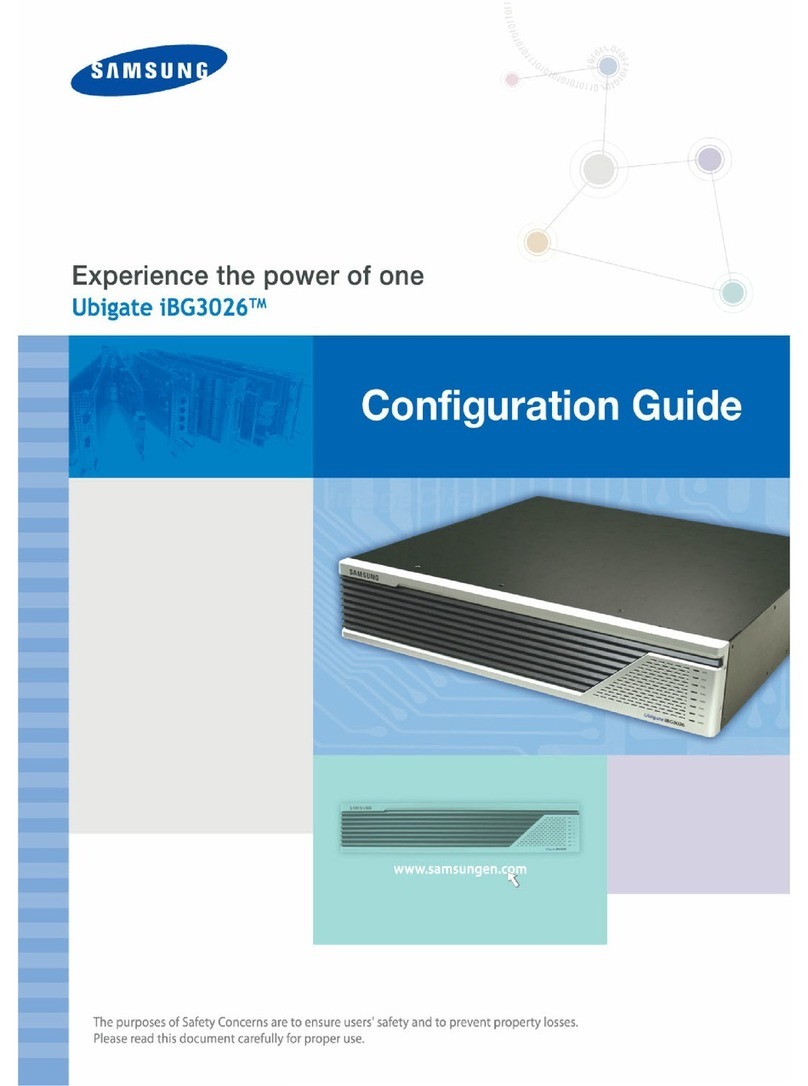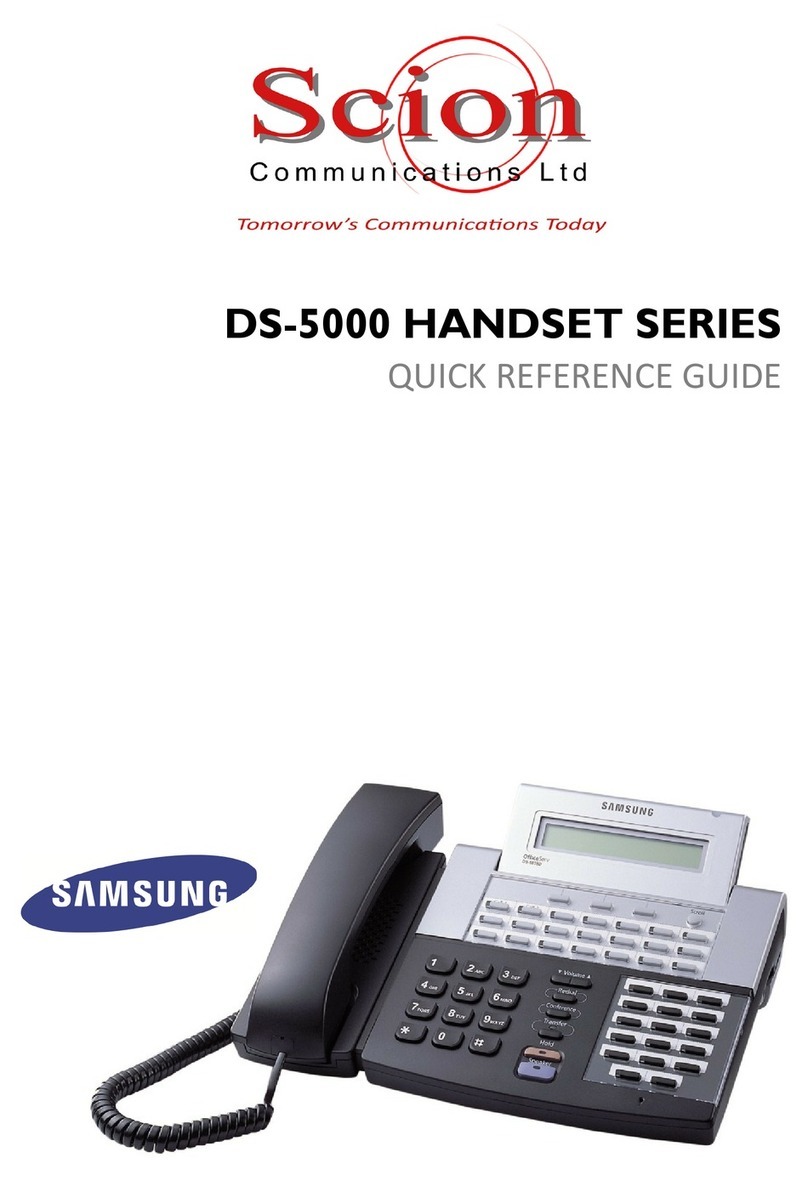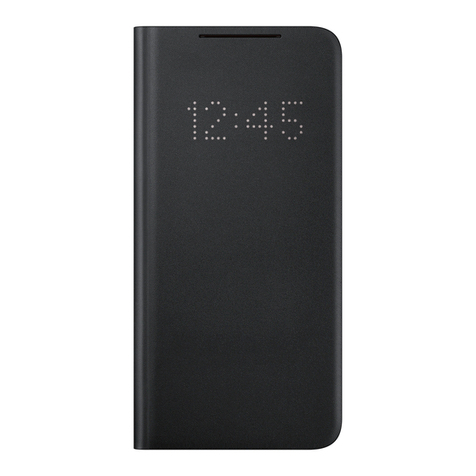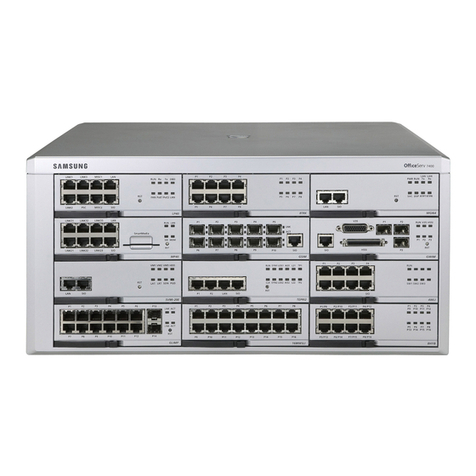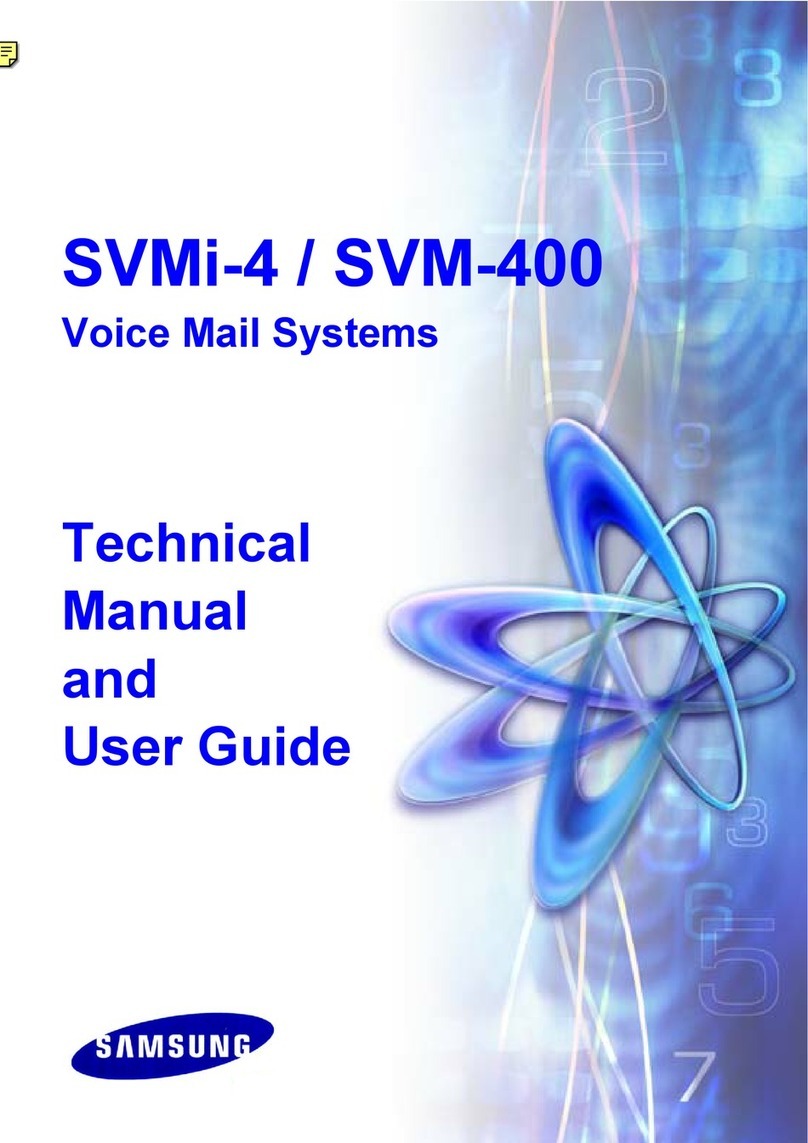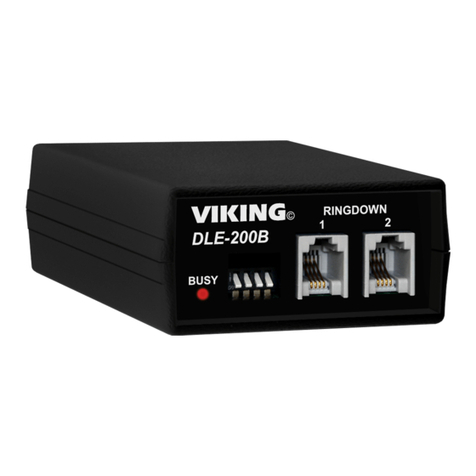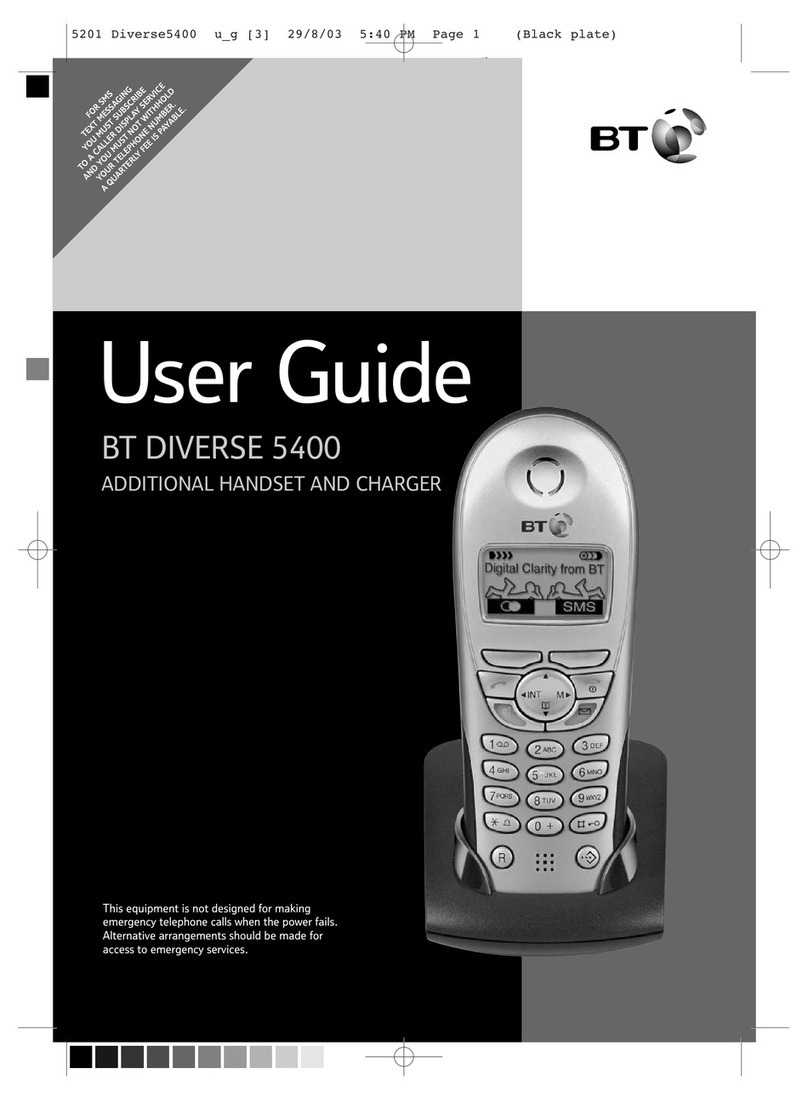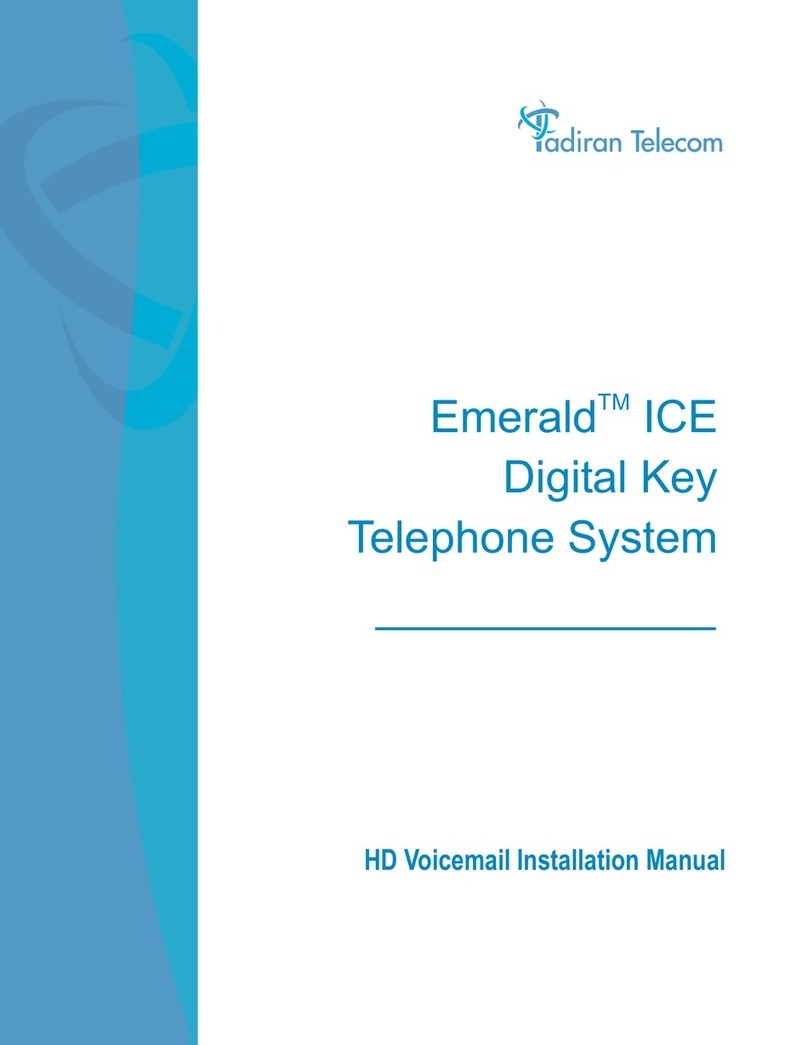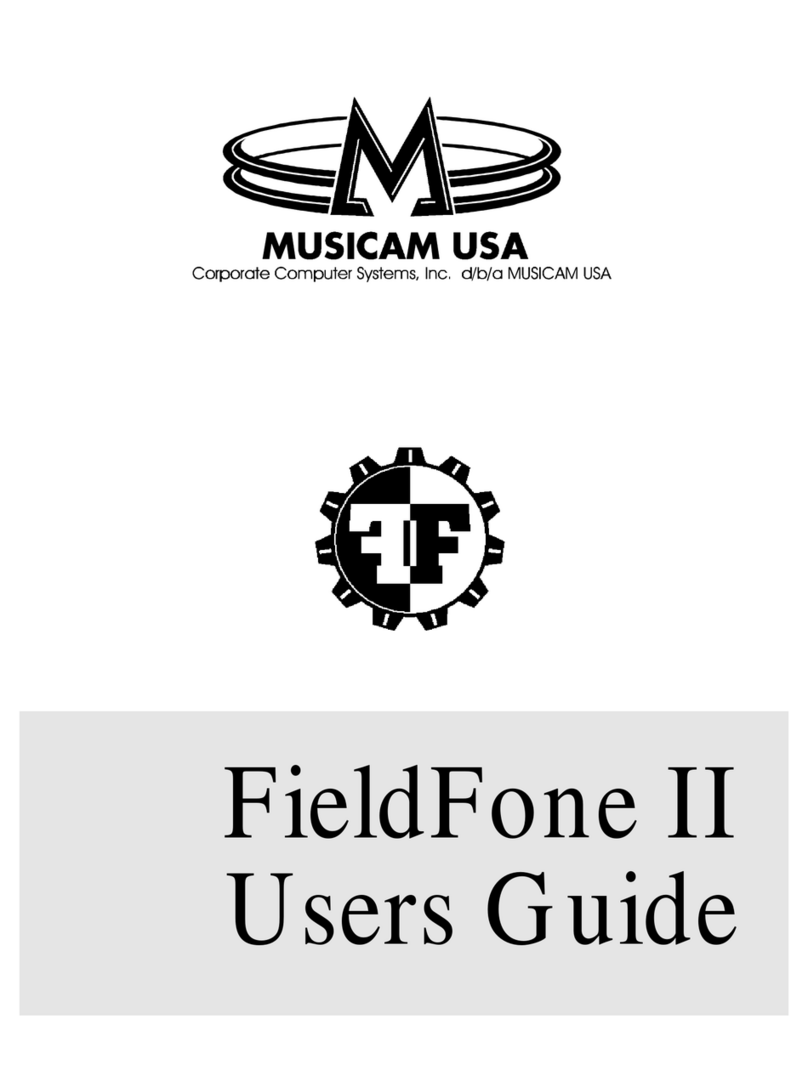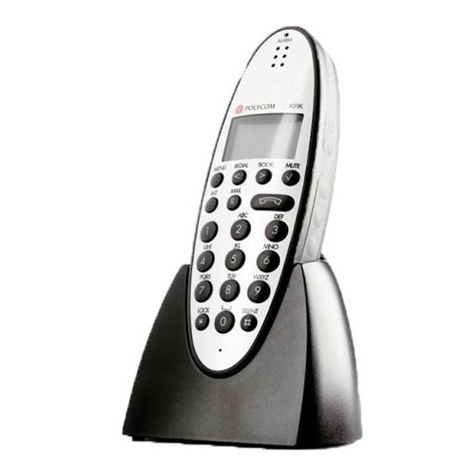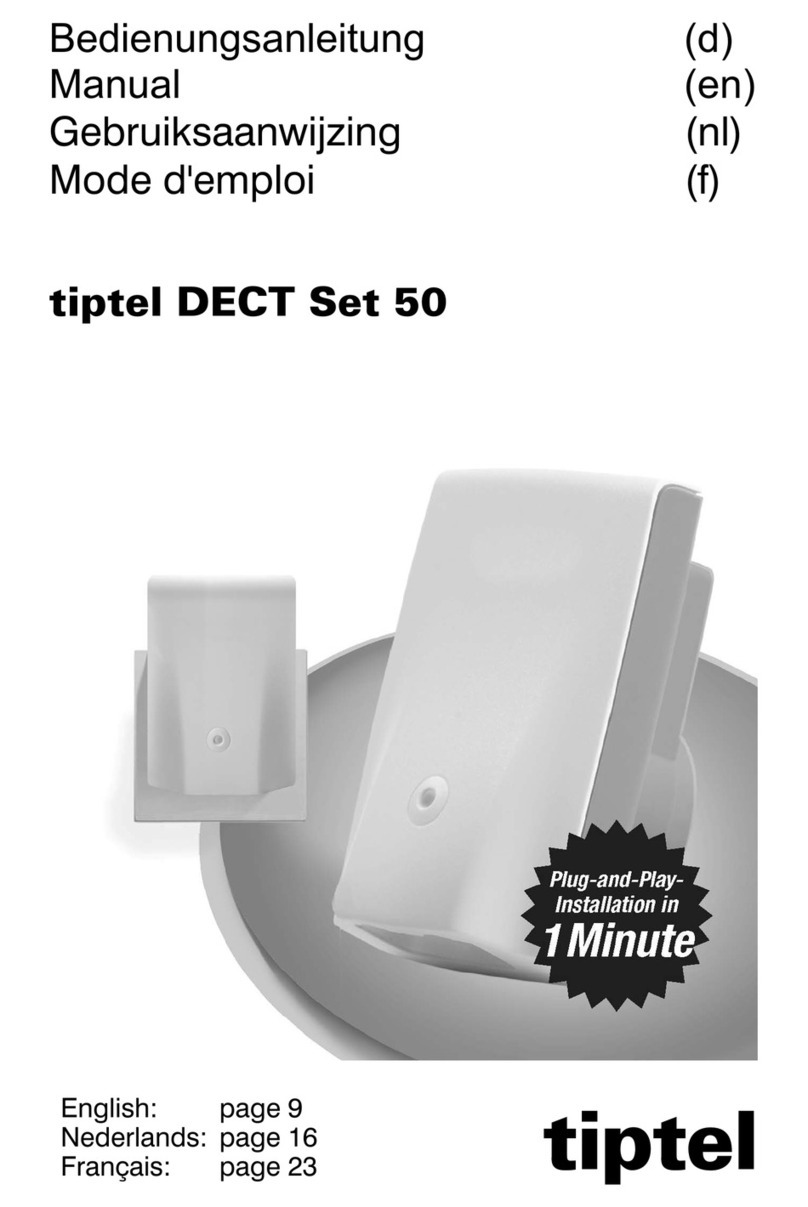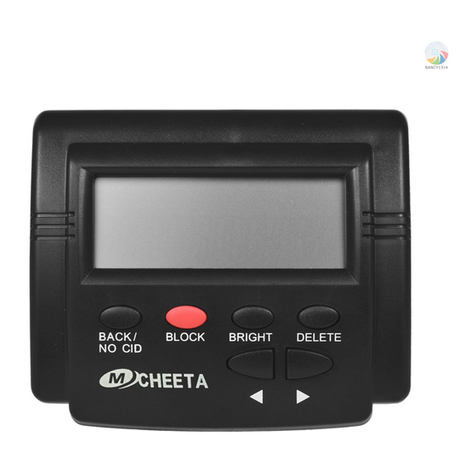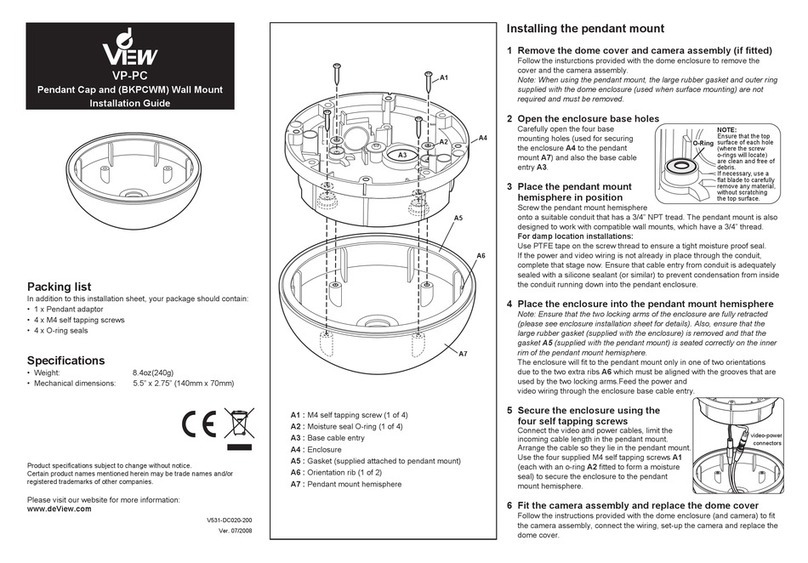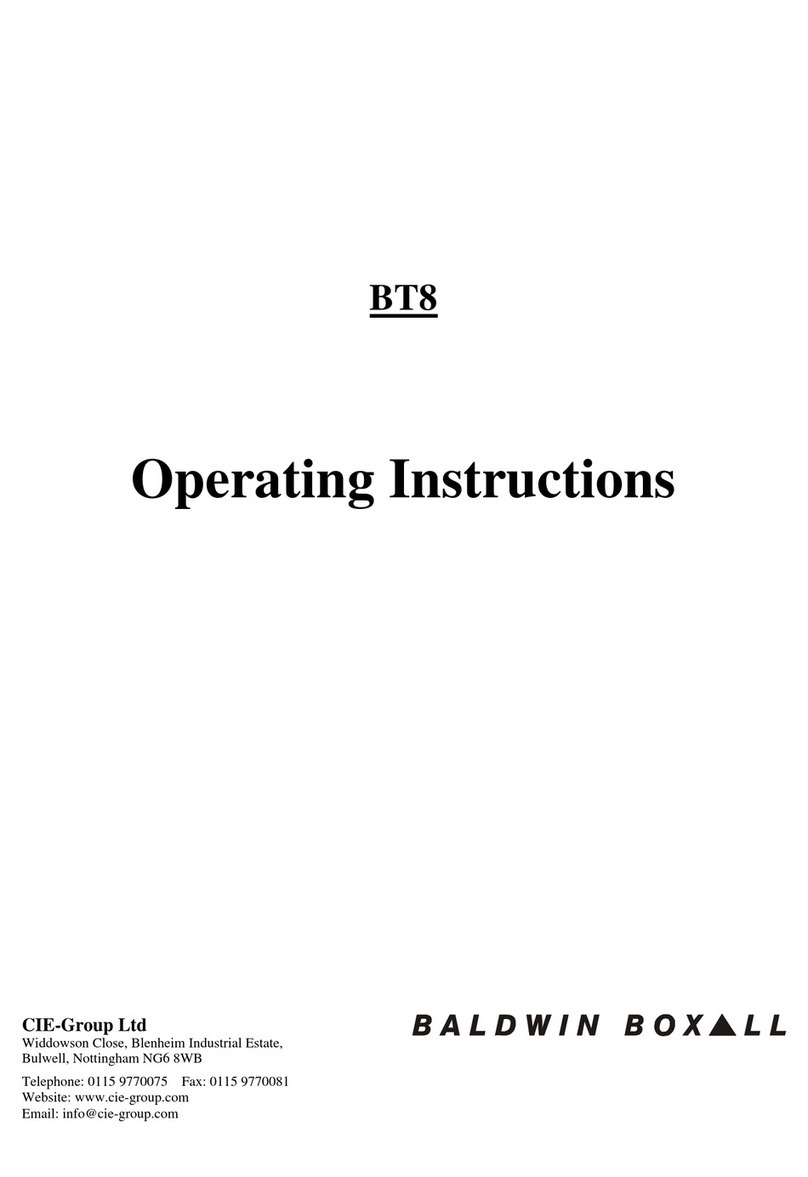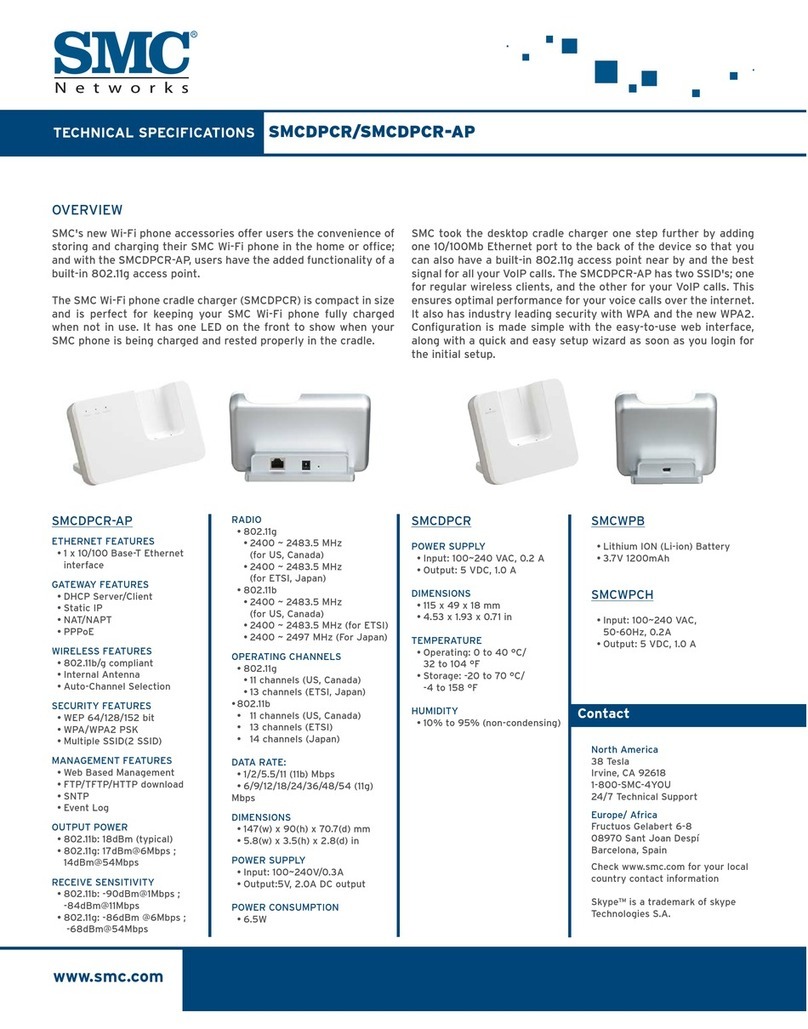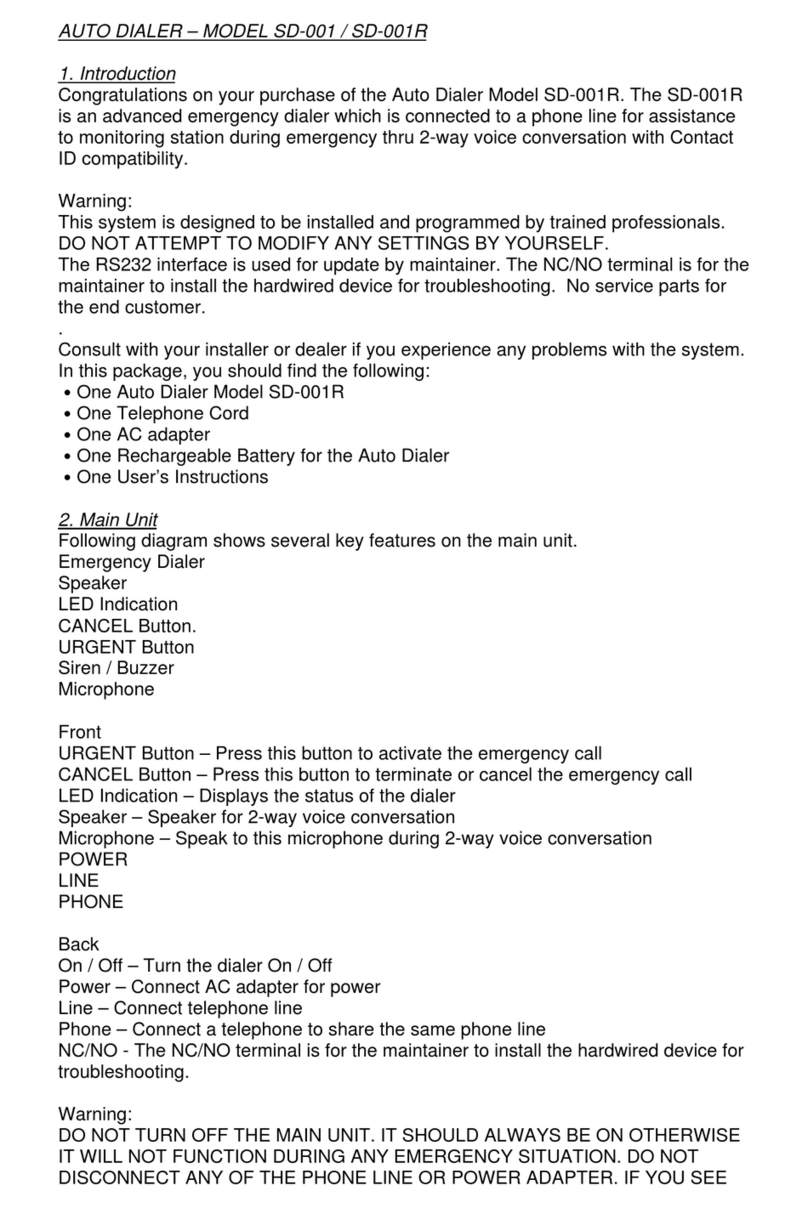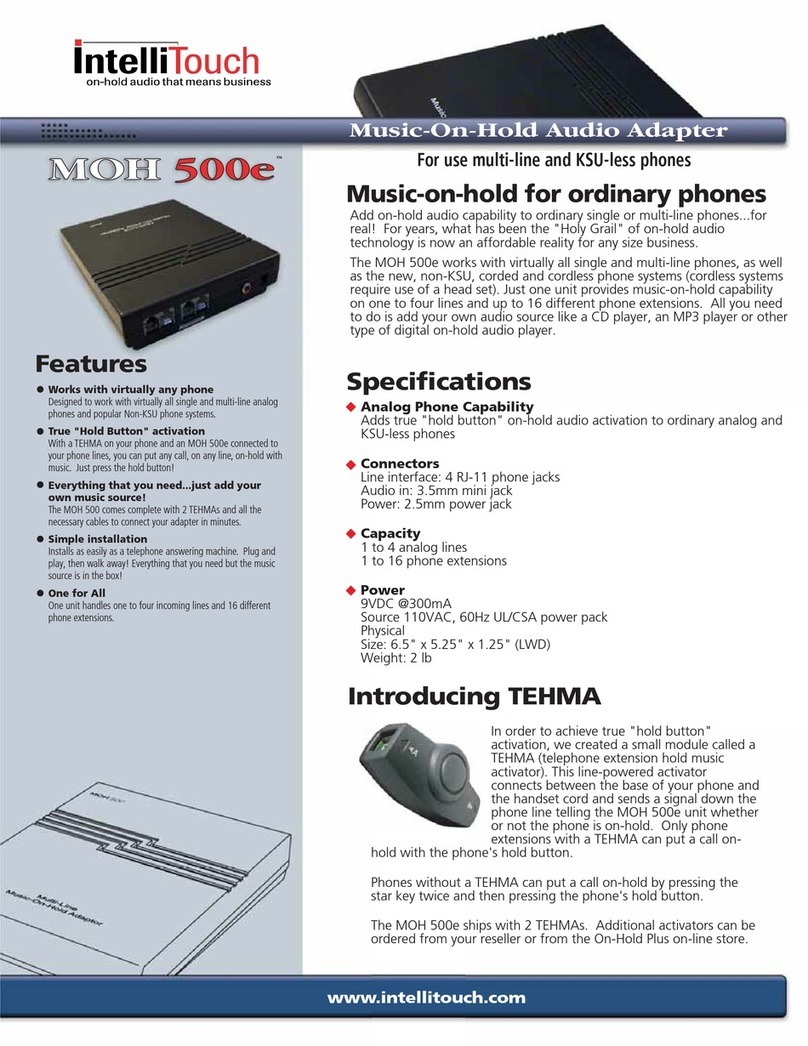
CONTENTS
1.2 TECHNOLOGY
SWITCHING
System switching is accomplished by means of a custom IC “engine” that provides 256
switchable digital channels. Each of the 256 digital channels is automatically assigned to
carry voice or data as required by system operation in a PCM format. In addition to the 256
channels mentioned above, the system also utilizes Digital Signal Processors or DSPs.
Each DSP may be configured by the switching control program as a DTMF sender, a
DTMF receiver or a C.O. tone detector on a per-call basis. The engine chip contains four
DSP channels and an additional four DSPs are added when a MISC card is installed. This
means that the system contains a total of eight DSP channels when fully expanded. The
DSP channels are fully shared throughout the system as a common resource.
MEMORY
The system operates using stored program control. This program is stored in either two
EPROM chips (1024 Kbytes of memory) or four EPROM chips (2048 Kbytes of memory)
depending on the feature package. All specific customer data is stored in non-volatile
random access memory (NV-RAM) located on the removable RAM pack. It is protected by
a Ni-Cd (NICAD) battery providing up to 30 days of memory protection.
MICROPROCESSORS
The DCS COMPACT uses distributed processing. The system’s primary processor is a 16
bit Motorola®MC68000 operating at a clock speed of 8 MHz. The secondary level of
processing is done in the keysets. The digital keyset uses a Hitachi H8 processor for data
communication within the DCS COMPACT.
1.3 PROGRAMMING
The DCS COMPACT comes with default data. This data provides for operation within
seconds after applying power. All trunks and stations are assigned according to the de-
fault numbering plan. This numbering plan is flexible and may be changed if so desired.
The technician customizes this default data to meet the end user’s requirements.
The system can be programmed from any display keyset without interrupting normal sys-
tem operation. There are three levels of programming: TECHNICIAN, CUSTOMER and
STATION. The technician level has access to all programs and can allow the customer
access to system programs as needed. Technician and customer access are controlled
by different security passcodes.
The DCS COMPACT also allows the use of a proprietary computer program called
CPCMMC. This permits a technician to program the system using a personal computer.
CPCMMC can be used on-site to modify the customer database or to
download
(save) the
entire customer database to a file. This file can then be saved as a backup and uploaded
when required to restore the database.
Through the use of modems, CPCMMC can access a DCS COMPACT system remotely
(off-site) to make database changes or perform uploads or downloads of the customer
database as if the technician were on-site.
1.3

